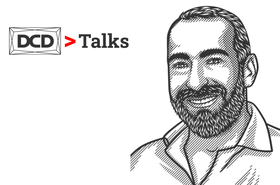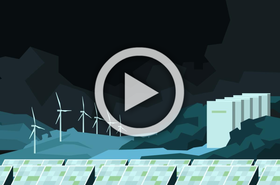As the data center industry drastically transforms and sectors become more intrinsically linked, one of the major moving parts is the data center sector’s approach to sourcing energy. As all industries are clamoring to improve their sustainability standards, it has become increasingly necessary to become proactive in seeking new methods of sourcing power, rather than remaining passive in its energy consumption.
The increasing adoption of Generative AI technologies over the past few years has placed unprecedented energy demands on data centers, coinciding with a global energy emergency exacerbated by geopolitical crises. Electricity prices have since reached record highs in certain markets, while oil prices soared to their highest level in over 15 years.
Embracing innovation
Volatile energy markets have awakened a need in the general population to become more flexible in their energy use. At the same time, the trends present an opportunity for the data center sector to get ahead of the game. By becoming managers of energy, as opposed to just consumers, market players can find more efficient and cost-effective ways to source power. Innovative renewable options present a highly attractive avenue in this regard.
As a result, data center providers are working more collaboratively with the energy sector for solutions. And for them, it’s increasingly likely that optimizing efficiency won’t be just about being close to the grid, but also about being close to the power-generation site – or even generating and storing power on-site.
An example of this trend is illustrated by the March announcement that Amazon Web Services (AWS) had acquired Talen Energy’s data center campus at a nuclear power station in Pennsylvania, US, for $650 million, and planned to develop a 960 MW campus.
The growing commitment to this cause was also demonstrated by the launch of the pan-European initiative, the Net Zero Innovation Hub for Data Centers, last September.
This initiative was introduced by the Danish multinational company, Danfoss, along with Google, Microsoft, and Schneider Electric, in recognizing the need for a swift societal shift to a zero-carbon economy, which cannot be solved by single businesses alone.
Acknowledging how crucial such initiatives are to move the conversation forward, Data4 joined the hub early this year. The company realizes that it will take a blend of strategies and technologies for the industry to achieve its sustainability goals, hence a coordinated and multisectoral approach between players is needed to turn discussion into effective action.
Wind and sun
As the industry evolves, Data4 leads the charge in innovative power-sourcing strategies, embracing opportunities to collaborate with energy players in new ways.
Recently, Data4 partnered with Eurowatt and Photosol, French leaders in renewable energy. Consisting of long-term contracts, these two power purchase agreements (PPAs) are a good illustration of the stronger and more robust commitment that data center players are making to achieve forward-thinking energy initiatives.
These deals also reflect the belief that there is no single solution to ensuring long-term, sustainable energy sources. The agreed contracts cover both wind and solar energy (three wind farms in France with Eurowatt and three photovoltaic parks with Photosol), ensuring a diversified energy supply and mitigating the risk of power outages.
The deals further minimize the risk of power outage through the involvement of power sources in different parts of the country, exploiting the varying climatic conditions in each location. For instance, the Photosol contract covers photovoltaic parks in both the Alpes-Maritimes region on France’s southeast coast and the northerly Loir-et-Cher region, south of Paris.
These agreements could set the stage for other promising collaborations in France and internationally. Data4 is also looking to introduce similar models in markets such as Italy, Spain, and Poland. However these initiatives pan out, they can help create possible templates for data centers to approach energy in the future.
Innovative deals such as these pave a way forward for the industry, alongside many other energy initiatives. For example, Data4, which has sought to put sustainability at the forefront of its operations, is exploring options from building data centers with low-carbon concrete to reusing heat with the first bio-circular data center.
Harnessing the potential of AI
Densification of racks in data centers is also a trend that caters for power demand, particularly linked to AI. Although the rapid growth of AI is creating a surging need for extra capacity and thus additional energy demands, AI can itself help counteract some of these issues, through methods such as real-time power consumption and parameter optimization.
At present, the growth of AI is outpacing what can be optimized, but more efficient methods enabled by the technology could change the outlook over time.
No silver bullet
An important point to remember is that there isn't a one-size-fits-all solution (or silver bullet, if you will) for sourcing power and enhancing energy efficiency in data centers. That means a variety of methods should be considered and used in parallel to help optimize power use in data centers.
The different players involved, including data center providers, hyperscalers, content companies, and energy providers also need to come together to work out how to progress in a way that benefits all.
In the current climate, options like green PPAs help kill two birds with one stone – both providing renewable energy sources and some financial predictability. It is predicted that choosing optimal locations for data centers to maximize the use of local energy resources and collaborating more closely with the power industry will also grow in importance moving forward.
If data center providers actively address future energy needs, they can become truly smart pipes for energy management. This approach will not only set an example for their sector but also inspire other industries. Moreover, It will lay the foundation for the next stages of the market’s sustainable energy journey.




